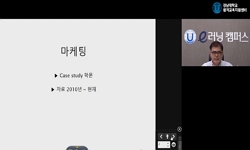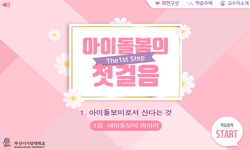The present study is conducted to examine actual conditions and usage of as well as satisfaction with outdoor landscape facilities installed near 3 outdoor areas at the campuses of 6 Korean and Chinese universities. The outcomes of the study can be su...
http://chineseinput.net/에서 pinyin(병음)방식으로 중국어를 변환할 수 있습니다.
변환된 중국어를 복사하여 사용하시면 됩니다.
- 中文 을 입력하시려면 zhongwen을 입력하시고 space를누르시면됩니다.
- 北京 을 입력하시려면 beijing을 입력하시고 space를 누르시면 됩니다.
한?중국 대학캠퍼스 내 조경시설물 이용실태 및 만족도에 관한 연구 : -전라북도와 무한시를 중심으로- = A Study on Actual Usage of and Satisfaction with Outdoor Landscape Facilities Installed at the Campuses of Korean and Chinese Universities
한글로보기https://www.riss.kr/link?id=T14035678
- 저자
-
발행사항
전주 : 전북대학교 일반대학원, 2016
-
학위논문사항
학위논문(석사) -- 전북대학교 일반대학원 , 생태조경디자인학과 생태조경디자인 , 2016. 2
-
발행연도
2016
-
작성언어
한국어
- 주제어
-
발행국(도시)
전북특별자치도
-
형태사항
x, 123 p. ; 26 cm
-
일반주기명
지도교수: 박율진
- 소장기관
-
0
상세조회 -
0
다운로드
부가정보
다국어 초록 (Multilingual Abstract)
First, the quantitative analysis of the actual states of landscape facilities by type of construction at the campuses of universities showed that chairs, tables, trash cans, street lights, monuments, direction signs and avenues for the handicapped are generally well maintained except for drinking fountains which do not function satisfactorily. By university, Chonbuk National University and Jeonju University in Korea and South-central University for Nationalities(中南民族大) in China are found to have fairly good landscape facilities by type of construction, while China's China University of Geosciences(中國地質大) doesn't seem to be fully equipped with landscape facilities although it could not be precisely determined because its central library was under construction during the site inspection. As long as vending machine and pergola are concerned particularly, Chinese universities are not satisfactorily furnished compared to the Korean counterparts, due probably to the differences in size and system of universities as well as to the different cultural customs with one another.
Second, as per general characters of the people using outdoor facilities at Korean and Chinese universities' campuses, users are mostly the students of the universities in the range of age from 20 to 29 and they use the areas surrounding the central libraries in the first place and then student centers and museums in order.
Third, the biggest number of times persons use landscape facilities at the universities in Jeollabuk-do, Korea amounts to 4 or more a week, whereas that at the universities in Hubei province, China is 3 times a week. Besides, the term from lunch time to afternoon is found to be the most favored hours for using landscape facilities in general. The users choose the facilities primarily for the purpose of recreation, meditation and reading while they actually spend time for the most part relaxing, talking and learning. Chairs, drinking fountains, trash cans, pergola and pavilions are named in order as the facilities needed to be reinforced or supplemented, which may be suggested to take into account with priority when beefing up the landscape facilities in the future.
Fourth, landscape facilities are used mainly for recreation, meditation and reading and women use them more frequently than men. Ways of using landscape facilities include mostly forms of relaxing, talking and learning. Men tend to be involved mainly in light activities such as relaxing and talking while women are engaged mostly in learning.
Fifth, people at large use landscape facilities longer than students with about 30 minutes to one hour whereas students use them for 2 hours or longer because, it is assumed, the latter have more leisure hours than the former and different style of usage from the former. The purpose of using landscape facilities is in general for taking rest, followed by meditation, reading, short wait, meeting and talking, play and sports in order.
Sixth, in terms of overall satisfaction with use of landscape facilities by region, the campuses of universities in Jeollabuk-do, Korea make a good score in the items such as material, design, harmony of buildings with facilities, suitability to reading, relaxation and talking as well as surrounding environment and landscape condition compared to the campuses of universities in Hubei province, China. The reason for such difference may be attributed to the unique characteristics of the systems and cultures of both countries and to the special aspects of regions, environments and users.
Seventh, with regard to satisfaction with landscape facilities by gender, it was revealed that male users express more satisfaction with size of gardens and quality of tables and chairs than female counterparts. This could imply that women own stronger propensity to keep refined sense for beauty and pleasure in daily living normally in contrast with men. By users, students find more interest in the number of trash cans than the general public, which might be caused from the fact that general people need to use trash cans more frequently in the course of their daily activities performed outside.
The present study is conducted to examine actual conditions and usage of as well as satisfaction with outdoor landscape facilities installed near 3 outdoor areas at the campuses of 6 Korean and Chinese universities. The outcomes of the study can be summed up as follows:
First, the quantitative analysis of the actual states of landscape facilities by type of construction at the campuses of universities showed that chairs, tables, trash cans, street lights, monuments, direction signs and avenues for the handicapped are generally well maintained except for drinking fountains which do not function satisfactorily. By university, Chonbuk National University and Jeonju University in Korea and South-central University for Nationalities(中南民族大) in China are found to have fairly good landscape facilities by type of construction, while China's China University of Geosciences(中國地質大) doesn't seem to be fully equipped with landscape facilities although it could not be precisely determined because its central library was under construction during the site inspection. As long as vending machine and pergola are concerned particularly, Chinese universities are not satisfactorily furnished compared to the Korean counterparts, due probably to the differences in size and system of universities as well as to the different cultural customs with one another.
Second, as per general characters of the people using outdoor facilities at Korean and Chinese universities' campuses, users are mostly the students of the universities in the range of age from 20 to 29 and they use the areas surrounding the central libraries in the first place and then student centers and museums in order.
Third, the biggest number of times persons use landscape facilities at the universities in Jeollabuk-do, Korea amounts to 4 or more a week, whereas that at the universities in Hubei province, China is 3 times a week. Besides, the term from lunch time to afternoon is found to be the most favored hours for using landscape facilities in general. The users choose the facilities primarily for the purpose of recreation, meditation and reading while they actually spend time for the most part relaxing, talking and learning. Chairs, drinking fountains, trash cans, pergola and pavilions are named in order as the facilities needed to be reinforced or supplemented, which may be suggested to take into account with priority when beefing up the landscape facilities in the future.
Fourth, landscape facilities are used mainly for recreation, meditation and reading and women use them more frequently than men. Ways of using landscape facilities include mostly forms of relaxing, talking and learning. Men tend to be involved mainly in light activities such as relaxing and talking while women are engaged mostly in learning.
Fifth, people at large use landscape facilities longer than students with about 30 minutes to one hour whereas students use them for 2 hours or longer because, it is assumed, the latter have more leisure hours than the former and different style of usage from the former. The purpose of using landscape facilities is in general for taking rest, followed by meditation, reading, short wait, meeting and talking, play and sports in order.
Sixth, in terms of overall satisfaction with use of landscape facilities by region, the campuses of universities in Jeollabuk-do, Korea make a good score in the items such as material, design, harmony of buildings with facilities, suitability to reading, relaxation and talking as well as surrounding environment and landscape condition compared to the campuses of universities in Hubei province, China. The reason for such difference may be attributed to the unique characteristics of the systems and cultures of both countries and to the special aspects of regions, environments and users.
Seventh, with regard to satisfaction with landscape facilities by gender, it was revealed that male users express more satisfaction with size of gardens and quality of tables and chairs than female counterparts. This could imply that women own stronger propensity to keep refined sense for beauty and pleasure in daily living normally in contrast with men. By users, students find more interest in the number of trash cans than the general public, which might be caused from the fact that general people need to use trash cans more frequently in the course of their daily activities performed outside.
목차 (Table of Contents)
- 제1장 서론 1
- 1. 연구의 배경 1
- 2. 연구의 목적 2
- 제2장 이론적 고찰 4
- 제1장 서론 1
- 1. 연구의 배경 1
- 2. 연구의 목적 2
- 제2장 이론적 고찰 4
- 제1절 옥외공간의 특성 4
- 1. 옥외공간의 개념 및 분류 4
- 2. 옥외공간의 기능 5
- 제2절 조경시설물 특성 6
- 1. 조경시설물의 개념 6
- 2. 조경시설물의 분류 6
- 제3절 대학캠퍼스 주요 관련법규 9
- 1. 한국 대학캠퍼스 주요 관련법규 9
- 2. 중국 대학캠퍼스 주요 관련법규 15
- 제3장 선행연구 18
- 1. 한국 선행 연구 18
- 2. 중국 선행 연구 20
- 제4장 연구의 방법 23
- 제1절 연구범위 및 내용 23
- 1. 연구대상지 선정 23
- 2. 연구의 범위 26
- 3. 연구의 내용 26
- 제2절 연구방법 28
- 1. 설문지 작성 및 자료수집 28
- 2. 분석방법 29
- 제5장 연구결과 및 고찰 30
- 제1절 한·중국 지역적 특성 30
- 1. 한국의 전북지역 특성 30
- 2. 중국의 호북성(湖北省) 지역 특성 34
- 제2절 대학캠퍼스 조경시설물 현황 38
- 1. 한국 전북지역 대학캠퍼스 조경시설물 현황 38
- 2. 중국 호북성지역 대학캠퍼스 조경시설물 현황 63
- 3. 한 ․ 중국 대상지 조경시설물 공종별 현황 79
- 제3절 조경시설물 이용실태 분석 80
- 1. 조사대상자 일반적 특성 80
- 2. 지역별 조경시설물 이용실태 교차분석 82
- 3. 성별 조경시설물 이용실태 교차분석 90
- 4. 이용자 유형별 조경시설물 이용실태 교차분석 96
- 제4절 조경시설물 이용만족도 분석 103
- 1. 지역별 만족도 분석 103
- 2. 성별 만족도 분석 105
- 3. 이용자 유형별 만족도 분석 107
- 4. 교내외 이용자별 만족도 분석 108
- 제6장 결론 109
- ■ 참고문헌 112
- ■ 부록 115
- 1. 설문지 116
- 2. 중국대학 캠퍼스 주요 관련법규 122












